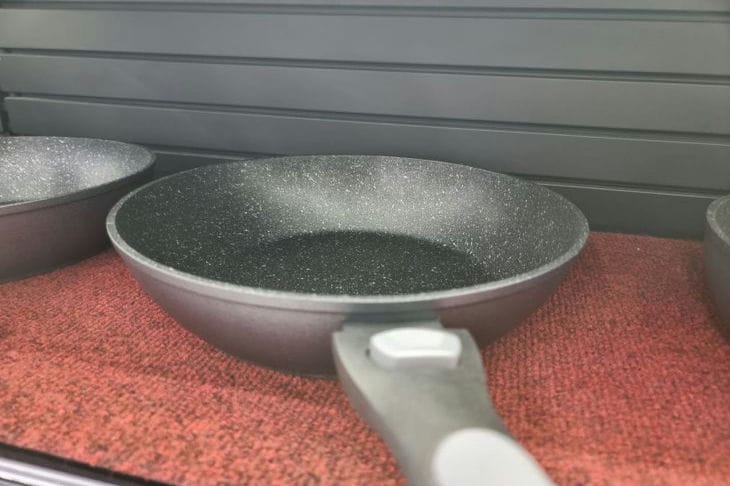Secrets of Perfect Frying: How to Prevent Food from Sticking to the Pan
Fried food is tasty and popular, but burning to the pan can ruin the culinary experience.
There are several simple and effective methods that will help you avoid this unpleasant situation.
Which frying pan to choose
The type of frying pan affects the quality of frying and the likelihood of burning.
Cast iron pans, due to their porous structure, acquire a natural non-stick coating over time. They distribute heat evenly, which ensures high-quality frying of products.
Non-stick pans are also a good choice, but require careful handling and the use of special spatulas to avoid damaging the coating.

Preheating
Preheating the pan before frying is an important step that helps prevent burning.
When cold food hits a hot surface, the proteins quickly coagulate, forming a protective layer that prevents sticking.
For cast iron pans, medium to high heat is recommended; for non-stick pans, medium heat is recommended.
Using oil
The oil creates a thin film between the pan surface and the food, reducing the likelihood of sticking.
The amount of oil depends on the type of food and the pan. Cast iron pans require more oil than non-stick pans.
Temperature control
Too high a temperature can cause food to burn, even in a non-stick pan.
It is important to select the optimal temperature for each type of product. For example, frying meat requires a higher temperature than frying vegetables.
Do not overcrowd the pan.
Overcrowding the pan will cause the temperature to drop, which will increase cooking time and the likelihood of burning.
It is recommended to fry food in batches to ensure even cooking and maintain juiciness.
Turn over food in time
Turning food over in a timely manner helps prevent burning and ensures even cooking. The time it takes to turn food over depends on the type of food and the thickness of the pieces.
Types of Oils for Frying
The choice of oil for frying affects the taste of the dish and its beneficial properties.
- Vegetable oils (sunflower, corn, soybean): have a neutral taste and are suitable for frying at high temperatures.
- Olive oil: rich in antioxidants and has a pleasant taste. Suitable for frying at medium temperatures.
- Coconut oil: has a high smoke point and a pleasant aroma. Suitable for frying at high temperatures.
- Butter: adds rich flavor and aroma to dishes. Suitable for frying at low and medium temperatures.
Caring for your frying pan
Proper care of the frying pan prolongs its service life and maintains its non-stick properties.
Cast iron pans must be seasoned before first use and oiled periodically.
Frying pans with a non-stick coating should be washed with a soft sponge and do not use abrasive products.
Earlier we wrote about why wise housewives put sugar in the refrigerator.
